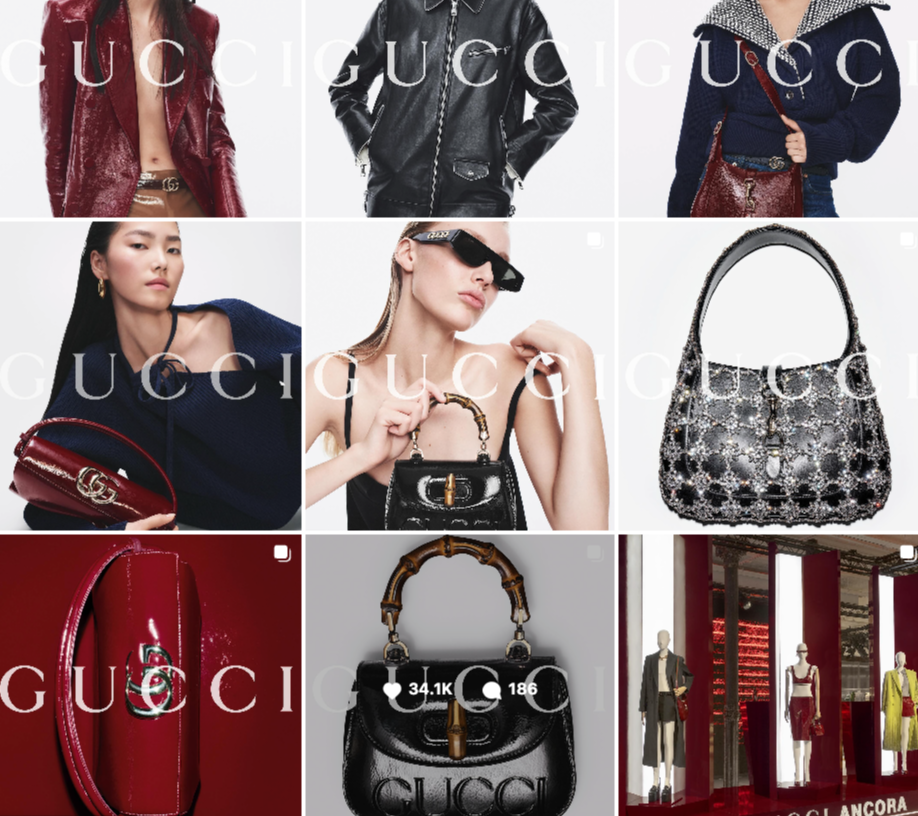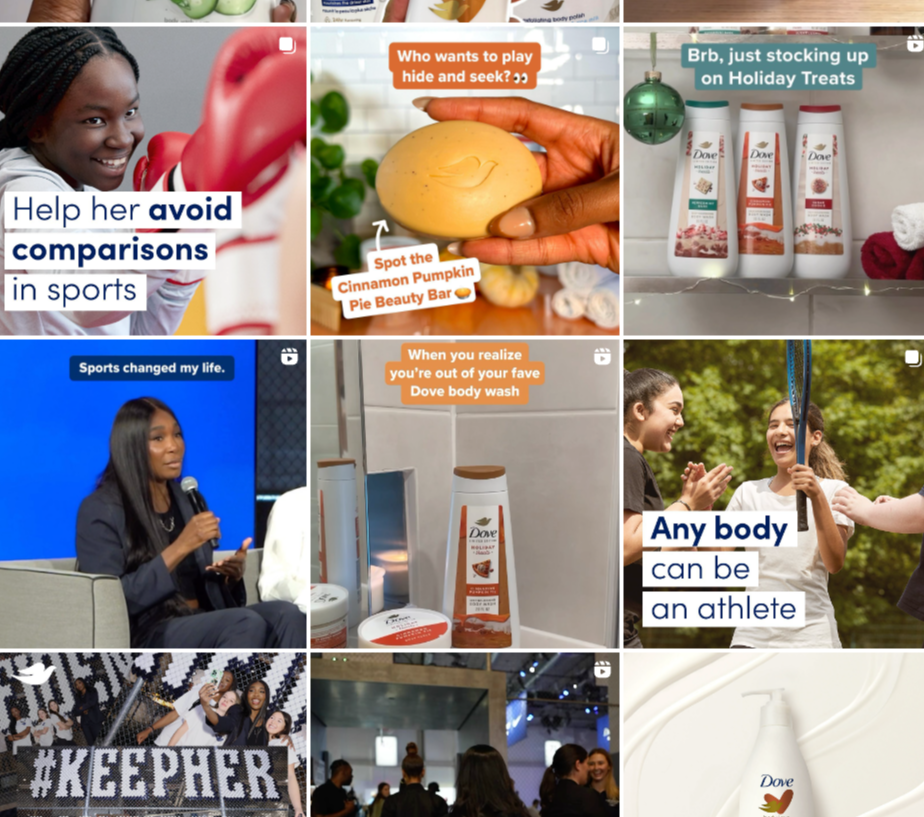Brand Voice Guide: 5 Personality Types to Craft Your Messaging
Is your brand voice failing to capture the essence of your company? Many businesses struggle to find a distinct voice that resonates with their target audience. Let’s face it, a well-defined brand voice is crucial for establishing a solid brand identity and building meaningful connections with your target market. This comes down to crafting a personality that mirrors the expectations and language of your target audience. In this post, we'll guide you through the process of transforming your brand voice, creating one that is both informative, engaging, and professional. This will help you communicate your brand's unique value proposition more effectively and forge lasting relationships with your audience.
Let's begin by taking a look at big brand personalities and exploring how they use their "personality" to drive their responses, how they create content that aligns with their brand voice, and how users connect with and perceive them.
Duolingo
Personality: Funny & Witty
When thinking of brands that capture audience attention on comedy, Duolingo and Scrubdaddy take the lead. Capitalizing on being unhinged, Duolingo and Scrubdaddy are some of the first companies to take the funny brand voice to the next level.
They have capitalized on viral trends and fired back with hilarious replies to comments that have given these brands the bold personalities for which they have gone viral. They've even stormed the younger generation's hearts with a collaborative masterpiece that cemented their internet dominance.
Why is it working for them?
Their audience and target demographic are key. Jokes might land flat with grandma, but these brands speak fluent Gen Z.
Standing out in a crowded market isn't easy, but humor can be a game-changer. It crafts a unique personality that separates them from the pack. This audience? They live for a good laugh, and brands that deliver are more likely to win their hearts.
Branding humor plays a significant role in their success. Social media users are more likely to share content that makes them laugh, leading to organic growth in a brand's reach and recognition. By fostering positive engagement and brand association, this playful approach can score them points over traditional ads by building stronger connections and making them more memorable.
Nike & Adidas
Personality: Empowering & Confident
Brands such as Nike and Adidas go for a sporty and confident voice aiming to convey determination and commitment to performance. This tone is often used to appeal to audiences who value achievement much like athletes.
Using their empowering brand voice to inspire and motivate others by posting about professional athletes who have achieved greatness.
Empowering & confident brand voices can help companies establish themselves as leaders in the industry, inspire their audience, and build long-lasting relations based on trust and reliability with their brand. Making sure the tone resonates with the target audience is what has made this a successful brand voice for Nike.
Nike has achieved this through numerous campaigns and slogans. In 2017, their campaign "Dream Crazier," featuring Serena Williams as the spokesperson, encouraged people to challenge stereotypes and empowered women to chase their dreams regardless of societal expectations.
Adidas has a long-running campaign called "All In or Nothing." This campaign emphasizes the dedication and commitment required to be a successful athlete, highlighting the importance of dedication to performance.
Gucci and Prada
Personality: Luxurious & Exclusive
 High-end luxury brands, like Gucci and Prada, often employ a more serious brand voice. This tone helps them convey a sense of exclusivity, quality, and luxury. It appeals to customers who value elegance, attention to detail, and the finer things in life. A serious tone fosters a sense of prestige around the brand, resonating with those who find value in exclusivity and rarity.
High-end luxury brands, like Gucci and Prada, often employ a more serious brand voice. This tone helps them convey a sense of exclusivity, quality, and luxury. It appeals to customers who value elegance, attention to detail, and the finer things in life. A serious tone fosters a sense of prestige around the brand, resonating with those who find value in exclusivity and rarity.
Many high-end brands possess a rich heritage and tradition, which they leverage in their communication by emphasizing this tone. This connection to their legacy and craftsmanship contributes to a sense of authenticity and timelessness. Ultimately, their brand voice is a reflection of their target marketing audience.
Prada's "Prada Cinéma" series of short films features artistic and thought-provoking visuals that evoke a sense of mystery and intrigue, reflecting the brand's intellectual and artistic heritage.
Gucci's campaigns frequently utilize bold colors, eclectic patterns, and unexpected juxtapositions. This reflects their playful and theatrical approach to fashion while still maintaining a luxurious feel through high-quality production and visuals.
Dove and Neutrogena
Personality: Authentic and Trustworthy
Focusing on inclusivity, Dove and Neutrogena celebrate women of all body types, sizes, ages, and ethnicities. They champion body positivity and share the stories behind the women they feature, acknowledging the lived experiences they represent. This approach fosters a sense of trust and shared understanding with their customers.

For brands like Dove, advocating for self-care through skincare products reinforces the importance of authenticity and trustworthiness. Consumers value honesty and transparency, which builds loyalty and fosters long-term relationships. Dove's "Real Beauty" campaign exemplifies this strategy by humanizing their brand and showcasing diverse individuals who share relatable experiences. Storytelling allows brands to connect with their audience on an emotional level, creating a stronger connection.
Dove and Neutrogena strive to be accessible to diverse financial backgrounds by offering affordable products without compromising on ingredient quality. This authentic approach demonstrates a sense of purpose beyond profit.
These brands also demonstrate their commitment to social responsibility by engaging with issues relevant to women. Neutrogena further emphasizes trustworthiness through their "Dermatologist Recommended Brand" slogan, which aligns with their focus on providing reliable and effective products.
By prioritizing honesty, transparency, consistency, customer focus, empathy, and a sense of purpose, brands can cultivate authentic and trustworthy relationships with their audience. This fosters loyalty, advocacy, and ultimately, long-term success.
Ram and Carhart
Personality: masculine, outdoorsy

Understanding their core audience of men, Ram and Carhartt tailor their brand voice to resonate deeply. This voice leans masculine and outdoorsy, embodying qualities like durability, ruggedness, and a connection to nature. It effectively appeals to individuals who enjoy outdoor activities, seek adventure, and value strength and resilience.
Employing strong and straightforward language, Ram and Carhartt incorporate terms and phrases commonly associated with outdoor pursuits. Examples include "explore," "conquer," "adventure," and "wilderness." This linguistic approach complements their imagery, which frequently features expansive landscapes, rugged terrain, and adventurous activities like hiking and camping.
Look at their taglines to get a clear understanding of the voices:
Ram Trucks: "Built to Serve" - This tagline emphasizes durability, reliability, and a sense of purpose, appealing to individuals who value functionality and dependability.
Carhartt: "Honest Work. Hard-Wearing Gear." - This slogan emphasizes the brand's commitment to quality and durability, resonating with individuals who value practicality and functionality in their clothing.
Don't know how to choose your brand voice or what brand voice is for your business? Take our Buzzfeed quiz and find out:
How to transform your current brand voice!
Analyze your existing content:
Start off by taking a look through all of your marketing materials, including your website, social media channels, email marketing, and any other materials you utilize. What are the common themes, tone, and personality you portray across these platforms?
Define your ideal voice.
Now that we’ve checked out a few brands with diverse personalities, it’s your turn! Let’s explore these five common brand voice types to find the perfect fit for your business:
- Funny & Witty:
This approach can effectively connect with younger audiences and bring a lighthearted touch to specific industries like entertainment or food & beverage. - Empowering & Confident:
This voice conveys a sense of strength, determination, and self-belief, resonating with athletes and individuals striving to overcome challenges and pushing them to achieve their personal best. - Luxurious & Exclusive:
It creates a sense of prestige and caters to a high-end audience. - Authentic & Trustworthy:
It aims to motivate and empower the audience. - Masculine & Outdoorsy
This caters to a specific demographic and is primarily used by brands associated with traditionally "masculine" activities or products.
Locate Your Audience
What is a Target Audience:
A target audience is a specific group of people within your target market that you aim to reach with specific marketing tactics or messaging. You can think of it as a segmented list you are trying to target specifically.
Target Audience Vs. Target Market
A target market is a broader view of the group of people who might be interested in your product. This encompasses anyone within your brand voice’s appeal and marketing strategies.
Examples: Your target market for a new line of athletic shoes could be "people aged 18-35 who are interested in fitness and have an active lifestyle."
A target audience, however, is a narrower view with a specific segment of your target market that you might be directing a particular marketing campaign towards. Let’s revisit that same example.
Example: Within your target market of "people aged 18-35 who are interested in fitness and have an active lifestyle," you might have a specific target audience of "young adults aged 20-25 who are training for their first marathon."
Understanding your target audience can be incredibly beneficial, particularly when aligning your brand voice with customer expectations. This knowledge proves invaluable, especially if you ever decide to venture into paid advertising like PPC. Having a clear grasp of your ideal customer will help you target the right people and maximize your campaign effectiveness.
Research Your Market
Understanding your target audience is crucial for crafting effective marketing strategies tailored to your target market. But before you dive into crafting the perfect message that resonates with your brand voice, it's essential to research your market thoroughly. This involves delving deeper than just your target demographic and exploring:
Analyze your competitor's Audience:
Social Media - Look at who engages with your competitor's social media platforms. Observing these interactions can give you valuable insights into their target audience's preferences and pain points, which are vital for defining your own brand voice.
Online Reviews - Examine your competitor’s reviews to see what aspects they are excelling in that their customers appreciate, and also note the negatives. Use this information to fine-tune your approach to better meet the needs of your target market.
Analyze Existing Customer
Your existing customer list isn't just a list—it's a goldmine of valuable insights waiting to be discovered! By analyzing this data, you can gain a deeper understanding of your target audience, identify the potential for increased customer engagement, and ultimately strengthen your brand loyalty.
Your Customer Base
Begin by exploring fundamental demographic information such as age, geographical location, and income. This initial step lays the groundwork for comprehending your existing customer base, empowering you to refine future marketing strategies with greater precision and align more closely with your target market.
Purchase History & Behavior
Keep digging deeper! Extend your analysis to purchase history, including your customers' most frequent purchases, purchase frequency, and average order value. This unveils insights into product preferences and purchasing habits, and opportunities for upselling. Furthermore, scrutinize customer behavior by examining website visits, email open rates, and social media interactions to gauge their engagement levels and better understand how they resonate with your brand voice.
Develop Buyer personas
Crafting a buyer persona is one of the cornerstones of understanding your target audience on a deeper level. By combining demographic data, purchasing behavior, and engagement patterns, you create a detailed profile of your ideal customer. This detailed profile serves as a roadmap for tailoring marketing strategies, product development, and customer experiences. With a well-defined buyer persona, businesses can anticipate needs, personalize interactions, and forge stronger connections with their audience, ultimately driving success in today's competitive landscape.
Boost Your Buyer Persona Building: Explore these fantastic tools that can make creating your buyer personas a breeze and elevate your marketing efforts.
Learn who your Target Audience is, NOT
While pinpointing your target audience is pivotal for marketing triumph, comprehending who you're intentionally not targeting can be equally advantageous. Here's why:
Optimize Resource Allocation: By omitting irrelevant demographics or interests from your campaigns, you streamline your budget and resources, guaranteeing that your message reaches the most relevant target market at the right moment. Imagine investing in ads that a significant portion of your audience won't find pertinent or engaging. Negative targeting prevents such wastage.
Tailor Messages for Precision: Concentrating on who you're excluding enables you to fine-tune your messaging, customizing it to resonate specifically with your ideal target market. This ensures that your communication deeply connects with them, fostering heightened engagement and conversions.
Prevent Misinterpretations & Negative Associations: Erroneously targeting the wrong target audience can result in misunderstandings and negative brand perceptions. By actively excluding irrelevant groups, you prevent aligning your brand voice with audiences that may not harmonize well with your messaging or values.
Uncover Market Insights: Analyzing excluded demographics unveils underlying trends and preferences in the broader market. This insight serves to refine your overall marketing strategy and identify potential opportunities that may have otherwise been overlooked.
Remember: Negative targeting is not about excluding entire groups based on superficial factors. It's about using available data thoughtfully to ensure your message reaches the most receptive target market, ultimately maximizing your marketing ROI (return on investment) and building stronger brand connections.
Authenticity: Above all, be authentic. Your brand voice should genuinely reflect who you are as a brand and resonate with your target audience on a personal level. Avoid trying to mimic other brands or using language that feels forced or insincere.
Download our FREE brand voice template and discover how to:
- Craft a clear and compelling message that resonates with your audience.
- Unleash your brand's unique personality.
- Attract the right customers and boost your brand recognition.




